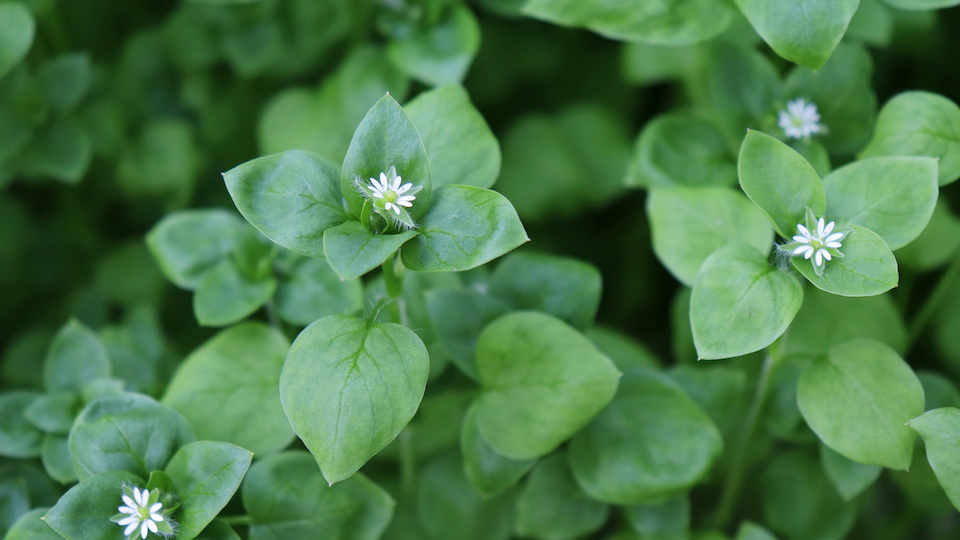Common chickweed is a plant native to Europe. It has become naturalized throughout the U.S. and other areas of the world. You’ve probably seen it in your lawn and may consider it a weed. It tends to grow in moist soils in full sun or partial shade. But, don’t think too poorly of this common weed – it has tremendous medicinal value and tastes great!
Chickweed is edible and has been used for centuries in folk remedies for a range of medical issues. Common chickweed grows low to the ground and has a stringy appearance. The oval leaves have a pointed tip, and the flowers are small, white, and daisy-like. A unique identifying characteristic is a thin line of fine hairs along the stems.
Use chickweed leaves in any way you would eat lettuce or baby greens. They have a pleasant, delicate flavor when eaten raw and contain nutrients like vitamin C and flavonoids. Ancient folk remedies using chickweed have found some support in modern research.
Chickweed is loaded with nutrients and supports healthy digestion and weight, possibly because it slows the absorption of fats and carbohydrates. Chickweed may also be useful as an expectorant when you have a cold. It reduces inflammation externally and internally and may help heal wounds.
Growing chickweed
As a plant that many consider a weed, chickweed is easy to grow from seed. If you have some in the lawn, you can dedicate an area to growing it or dig it up and grow in containers indoors or outside. To start from seed, plant about three seeds per inch in a starter tray and cover with a quarter-inch of soil. Thin the seedlings as they grow to about five inches between each plant.
Start chickweed inside or directly in a bed or containers outdoors in autumn or late winter. This is a winter annual, so don’t wait until spring to plant. It grows best in rich soil with added compost that drains but also retains some moisture. Keep chickweed well-watered but not soggy. It will do best in a spot with a bit of shade as well. Use mulch in sunnier areas to help keep the soil moist. Chickweed will grow well without any fertilizer.
Stems, flowers, and leaves are all edible
To harvest chickweed, cut off the top sections of stems as you need them. Don’t remove the entire plant if you want it to propagate itself for next year. You can use the stems, leaves, and flowers fresh as you harvest them. All are edible and suitable for medicinal preparations. Avoid harvesting the lower parts of stems, as these can be tough and fibrous.
Storing chickweed properly
Chickweed is best used fresh, although you can air dry it if you want to store the plant material for medicinal uses later. Let the plants dry out thoroughly before storing them in an airtight container. For fresh chickweed, keep it no longer than a few days in the vegetable drawer of your refrigerator.
Soothe irritated skin with this chickweed salve
Make chickweed-infused oil salve to soothe irritated, inflamed skin. Combine about two cups of leaves with 1 cup of coconut oil. Process in a blender and warm on the stove to infuse. Let it sit for several hours, and then strain out the leaves once the oil is green. When it cools and hardens, you’ll have a salve. Apply to irritated and sore skin as needed to speed up healing and reduce inflammation.
Happy growing,
-Susan Patterson, CBHC and Master Gardener



